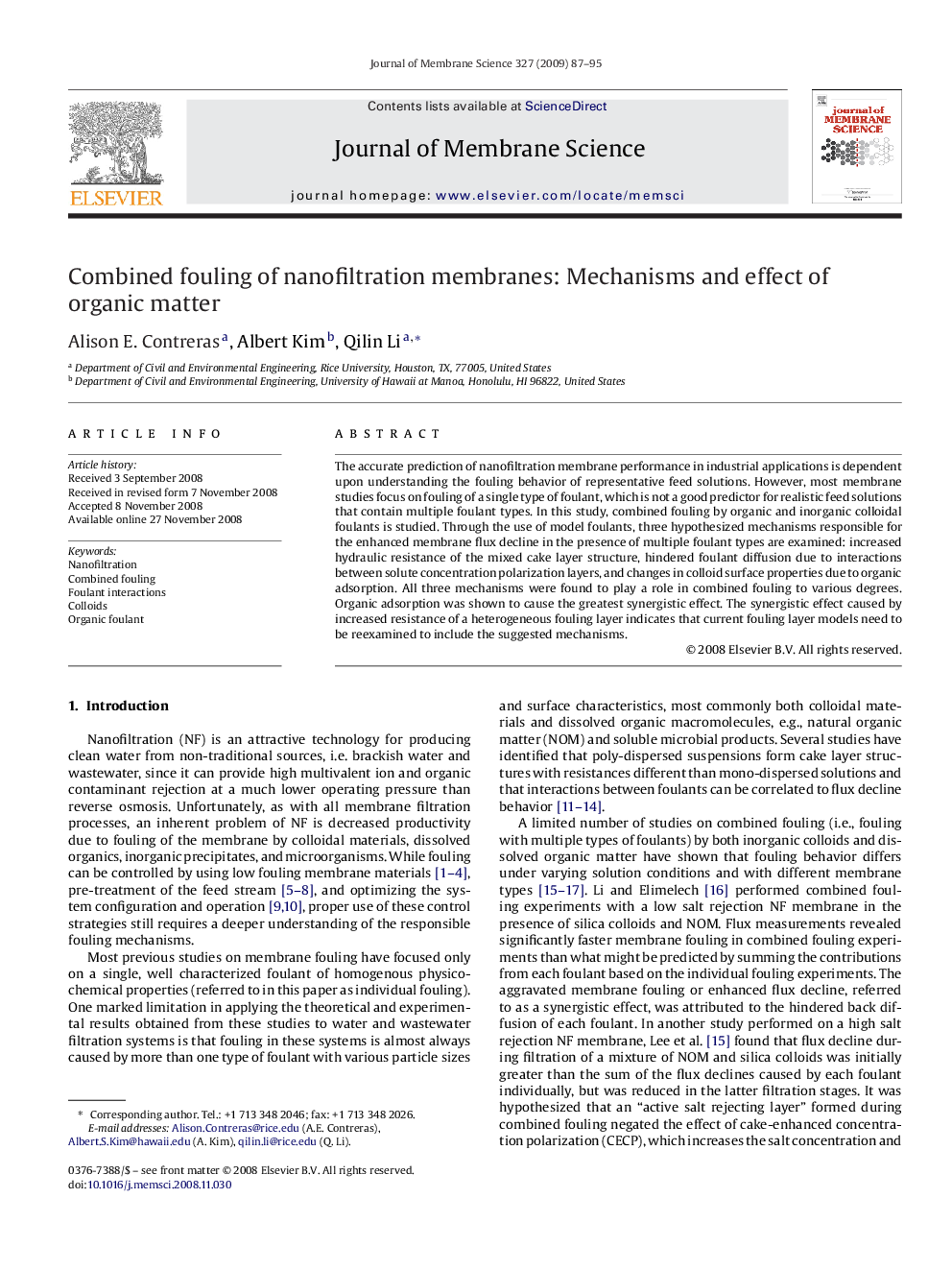| Article ID | Journal | Published Year | Pages | File Type |
|---|---|---|---|---|
| 637613 | Journal of Membrane Science | 2009 | 9 Pages |
The accurate prediction of nanofiltration membrane performance in industrial applications is dependent upon understanding the fouling behavior of representative feed solutions. However, most membrane studies focus on fouling of a single type of foulant, which is not a good predictor for realistic feed solutions that contain multiple foulant types. In this study, combined fouling by organic and inorganic colloidal foulants is studied. Through the use of model foulants, three hypothesized mechanisms responsible for the enhanced membrane flux decline in the presence of multiple foulant types are examined: increased hydraulic resistance of the mixed cake layer structure, hindered foulant diffusion due to interactions between solute concentration polarization layers, and changes in colloid surface properties due to organic adsorption. All three mechanisms were found to play a role in combined fouling to various degrees. Organic adsorption was shown to cause the greatest synergistic effect. The synergistic effect caused by increased resistance of a heterogeneous fouling layer indicates that current fouling layer models need to be reexamined to include the suggested mechanisms.
